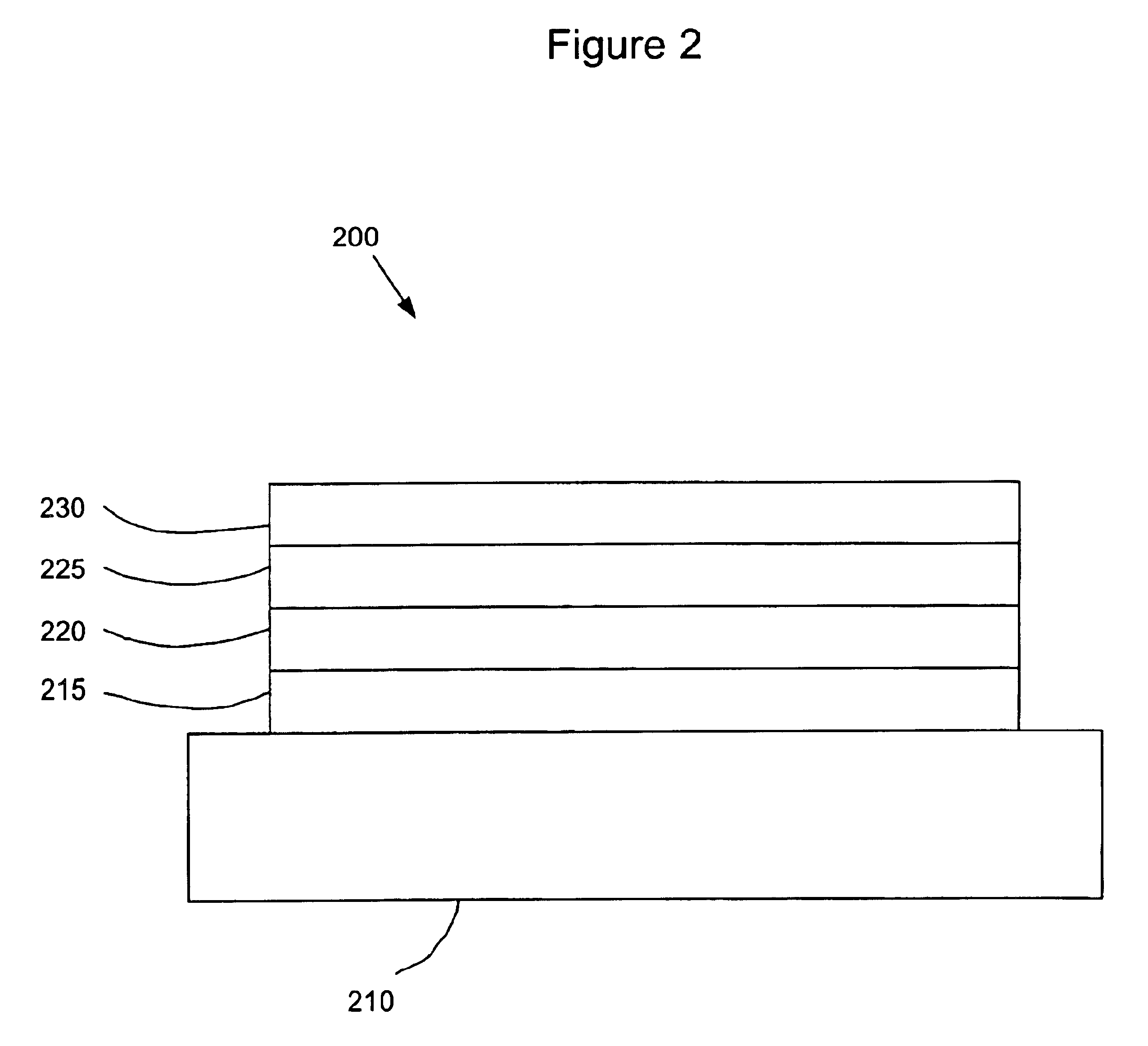Organic light emitting device structures for obtaining chromaticity stability
a light-emitting device and organic technology, applied in the direction of thermoelectric devices, solid-state devices, semiconductor/solid-state device details, etc., can solve the problems of low efficiency, complicated design of such devices, devices suffering, etc., and achieve high color stability
- Summary
- Abstract
- Description
- Claims
- Application Information
AI Technical Summary
Benefits of technology
Problems solved by technology
Method used
Image
Examples
example 1
[0108]An OLED was prepared with the structure ITO / CuPc(100 Å) / NPD(300 Å) / CBP:Irppy(50 Å, 6%) / mCP:Ir(F2CNppy)2(pic)(200 Å, 6%) / CBP:Ir(pq)2(acac)(50 Å, 6%) / BAlq(400 Å) / LiF(5 Å) / Al(1000 Å). FIG. 4 shows the plots of the normalized emission spectra at various current densities for this device. FIG. 5 shows the plots of luminous efficiency and power efficiency vs. luminance for this device.
example 2
[0109]An OLED was prepared with the structure ITO / CuPc(100 Å) / NPD(300 Å) / mCP:Ir(F2CNppy)2(pic)(200 Å, 6%) / CBP:Ir(pq)2(acac)(50 Å, 6%) / CBP:Irppy (50 Å, 6%) / BAlq(400 Å) / LiF(5 Å) / Al(1000 Å). FIG. 6 shows the plots of the normalized emission spectra at various current densities for this device. FIG. 7 shows the plots of luminous efficiency and power efficiency vs. luminance for this device.
example 3
[0110]An OLED was prepared with the structure ITO / CuPc(100 Å) / NPD(300 Å) / mCP:Irppy(6%, 50 Å) / mCP:Ir(F2CNppy)2(pic)(6%, 225 Å) / CBP:Ir(pq)2(acac)(6%, 25 Å) / BAlq(400 Å) / LiF(5 Å) / Al(1000 Å). FIG. 8 shows the plots of the normalized emission spectra at various current densities for this device. FIG. 9 shows the plots of luminous efficiency and power efficiency vs. luminance for this device.
PUM
 Login to View More
Login to View More Abstract
Description
Claims
Application Information
 Login to View More
Login to View More - R&D
- Intellectual Property
- Life Sciences
- Materials
- Tech Scout
- Unparalleled Data Quality
- Higher Quality Content
- 60% Fewer Hallucinations
Browse by: Latest US Patents, China's latest patents, Technical Efficacy Thesaurus, Application Domain, Technology Topic, Popular Technical Reports.
© 2025 PatSnap. All rights reserved.Legal|Privacy policy|Modern Slavery Act Transparency Statement|Sitemap|About US| Contact US: help@patsnap.com



